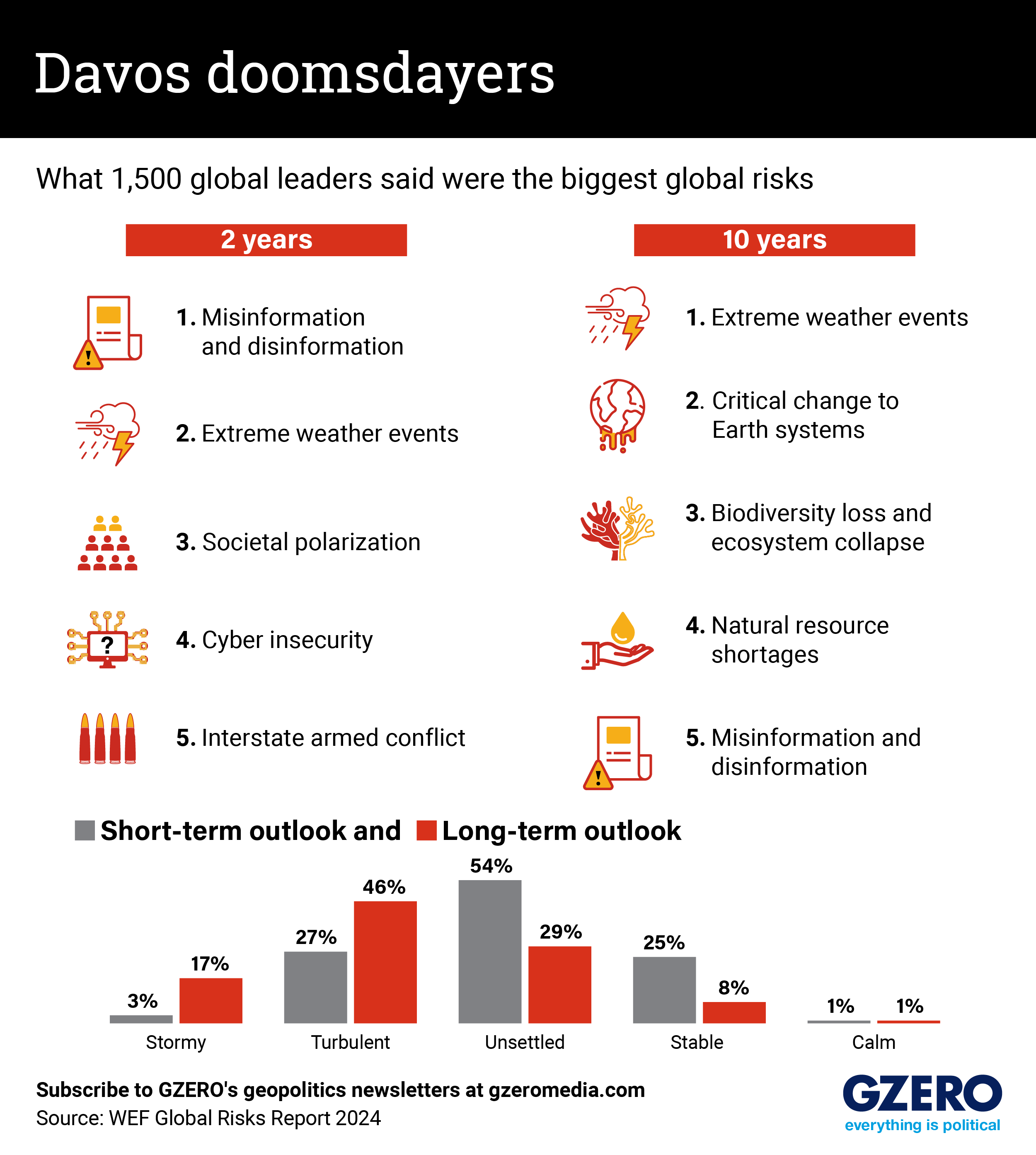Annie Gugliotta
The World Economic Forum asked 1,490 experts from the worlds of academia, business, and government, as well as the international community and civil society to assess the evolving global risk landscape.
These leaders hailed from 113 different countries and the results show a deteriorating global outlook over the next 10 years, with the number of people who responded that the “global catastrophic risks [are] looming” jumping from 3% over the next 2 years to 17% over the next 10.
But after a year of lethal conflicts from Gaza and Ukraine to Sudan, record-breaking heat, with both droughts and wildfires, and polarization on the rise, can you blame them for being worried?
